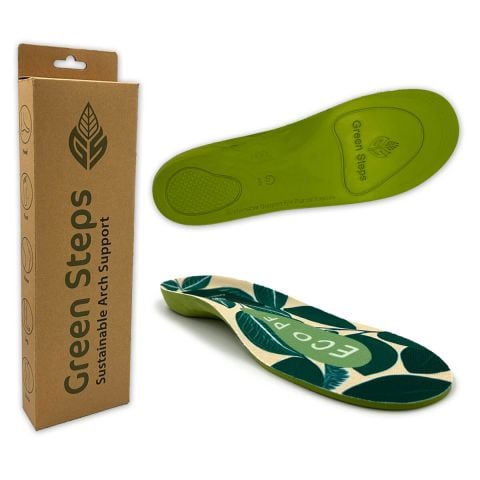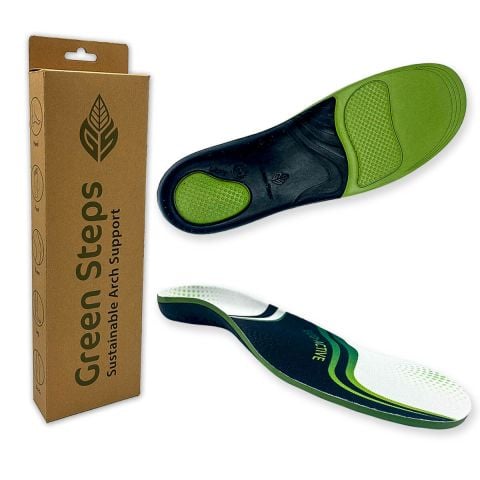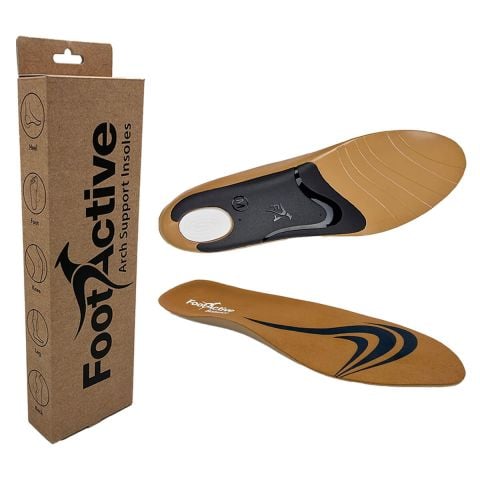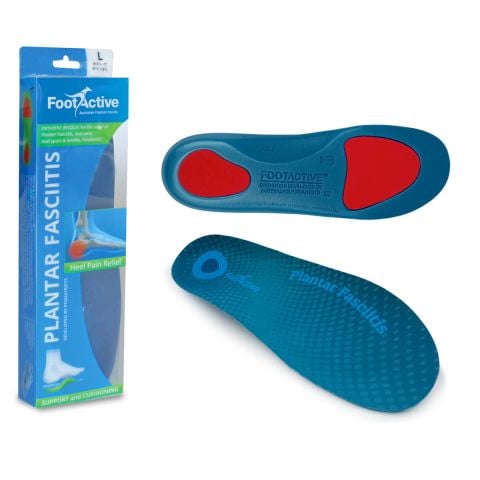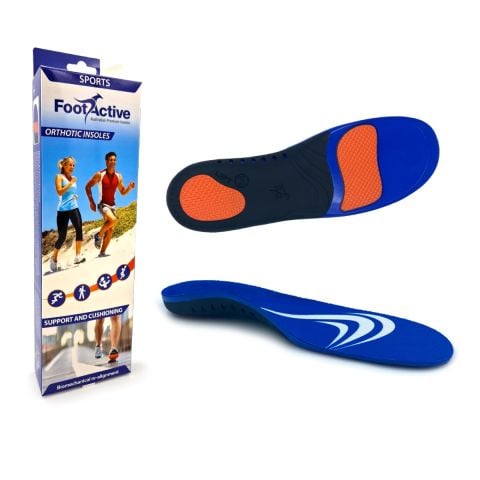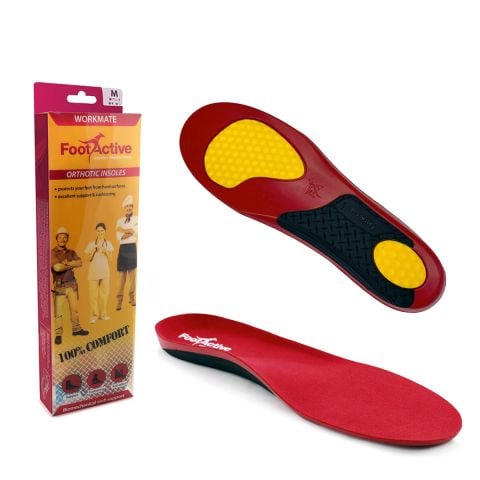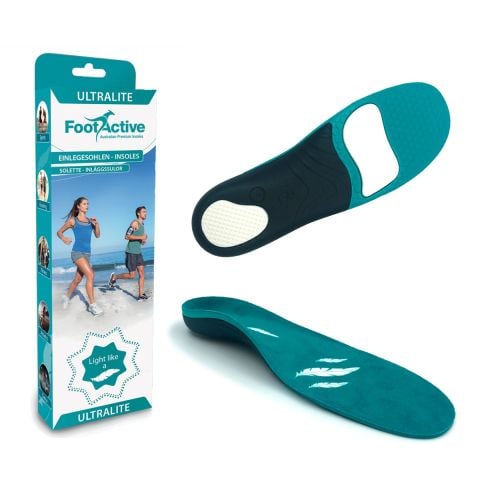What Factors Cause Pain In Heel Of Foot?
Heel pain can be experienced on the underside of the heel and the arch of the foot. This kind of heel pain is actually called Plantar Fasciitis and is manageable with orthotics or supportive shoe inserts. Plantar Fasciitis is the most common kind of heel pain and cause of heel spurs. The plantar fascia is the band of fibrous tissue which connects the heel bone to the toe bones. Its function is to support the arch of your foot. A normal fascia tendon is strong and flexible but abnormal stress, excessive weight, age and poor foot function can cause micro-tears which will lead to irritation and inflammation at the attachment of the plantar fascia into the calcaneus (heel bone).
During rest (e.g. when you're asleep or long periods of inactivity), this muscle tightens and shortens leading to the sharp pain in heel that you are experiencing.
When body weight is rapidly applied to the foot, the fascia must stretch and quickly lengthen, causing micro-tears in the fascia. Hence, the stabbing heel pain with your first steps in the morning.
After a little bit of walking the sharp pain in heel that many experience usually subsides.
A more temporary cause for heel pain is a sprain or strain as a result of physical activity. Plantar Fasciitis is a kind of sprain (as it overstretches the tissue that runs from the heel to the toe bones), but sport-related sprains are often more temporary. You can experience this temporary heel pain as a result of carrying something heavy, slipping and falling or a prolonged time in a non-optimal position.
What Causes Pain In Heel Of Foot:
- You suffer from over-pronation (lowering of the arches)
- You are over 50 years of age
- You are overweight or pregnant
- You stand or walk on hard surfaces for long periods
- You do a lot of running and/or sports
- You have tight calf muscles
Other less common causes of heel pain may include:
Bursitis - This is the inflammation of the small, fluid filled sacs (Bursa) which are found between tendons and bones.
Fat Pad Atrophy - This is where the fat pad under the heel is damaged due to too much strain. Women who wear high heels a lot are more prone to this.
Sever's Disease - This is more common in children. It is caused by the tightening and lengthening of muscles and tendons due to growth spurts and can lead to a sharp pain in heel as well as continued discomfort.
Tarsal Tunnel Syndrome - There is a small "tunnel" by the ankle joint which the nerves for the foot pass through. If this is damaged, then the nerves are compressed, and this can result in pain along the foot including under the heel.
How To Care For Heel Pain
As the most common form of heel pain, strains such as Plantar Fasciitis can largely be treated at home. Treatment for heel pain is focused on preventative measures and pain management, including the following:
Pain Relief – Over the counter anti-inflammatory medication, such as ibuprofen, will temporarily manage the pain if you are experiencing acute heel pain or the stabbing sensation is prolonged.
Supportive Footwear – FootActive orthotic inserts are designed by Podiatrists and are NHS recommended for providing effective heel pain relief making them some of the best insoles for heel pain. These insoles will support the longitudinal arch and the transverse arch with cushioning for shock absorption. The insoles will raise the heel and reduce the stress on the tendon and minimalize the sharp pain in heel that you may be experiencing. This is a low-cost and efficient way to combat heel pain, as it does not interrupt your daily routine or prevent you from enjoying physical activity. Plantar Fascia insoles also help with other foot health concerns and are a long-term solution for heel pain.
Ice & Rest Rotations – This easy cure-all method will reduce the swelling or inflammation of heel pain. It is a more temporary solution, but if you find your heel pain only occurs after a long day on your feet, you might find this method beneficial. If you feel the need to use this form of heel pain treatment regularly, it is advised that you consider long-term solutions for heel pain relief, such as insoles or consult your podiatrist.
Here at FootActive, we understand that finding the perfect insoles that fit in your shoes can be difficult. Therefore, we provide you with several different options for our support insoles, that can fit in any shoes you find yourself wearing throughout the day. Regardless of whether you find yourself needing insoles for your work boots or find you require insoles for your favourite pair of heels, we can provide insoles that work for you in your day-to-day life.
Physical Therapy – You can complete courses or watch videos of physical conditioning that strengthen the tendon and muscles in your feet, reducing your heel pain. Exercises will focus on the Plantar Fascia, Achilles tendon and lower leg muscles (soleus & gastrocnemius) to help provide heel pain relief on the days where the pain is particularly troublesome.
Medical Intervention – Sometimes, if the pain persists and becomes acute enough that it stops you from working and minimises your movement, your doctor may decide to use steroid injections as the best heel pain relief for you. This will only be an option in very serious (and very few) cases as it risks rupturing the tendon.
As a last resort, your doctor may decide to surgically separate the plantar fascia from the heel bone to remove the issue and provide long term heel pain relief.
For more information on managing and preventing heel pain, contact the experts at FootActive. We will also be able to advise on the most effective and useful orthotic insert to combat your unique foot pain.
Heel Pain FAQs
How common is heel pain?
Heel pain is the most common foot complaint in the UK. Despite this, however, it is one of the most easily treatable with many prevention methods, medications and even specialist insoles to help provide the best heel pain relief as quickly and inexpensively as possible.
What Causes Pain In Heel Of Foot?
Heel pain has many causes. The most common is plantar fasciitis, however, it can also be caused by bursitis, fat pad atrophy, tarsal tunnel syndrome, and Sever’s disease. Other factors can contribute to a sharp pain in the heel, such as your age, weight, lifestyle or if you’re pregnant.
Is heel pain the same as Plantar Fasciitis?
Sharp pain in your heel is a symptom, often caused by a condition like plantar fasciitis, but it isn’t the same thing. The best heel pain relief insoles can help to limit the impact you are having on your foot with every step and reduce the pain overall.
When should you be concerned about a sharp pain in the heel?
Though most heel pain can be resolved at home, it’s important to monitor your level of pain and how long it persists. Should the sharp pain in heel or other symptoms persist despite being treated with some of the home remedies mentioned above, it may be time to visit your GP. You should see a doctor if the pain in your heal is getting worse or if it prevents you from carrying out day to day activities.
Always see your GP if you lose sensation in your foot, if pain prevents you from carrying out normal activities, or if you are a diabetic.
How do you identify heel bursitis?
There are many ways that you can begin to identify the presence of heel bursitis, some of these are as follows:
- The back of your heel may be warm and appear red in colour.
- Your pain may worsen when standing on tiptoes, or when running or walking.
- Shoes may become uncomfortable.
- You may experience pain in the calf muscles when running or walking.
- Stiffness is also common.
Should you experience a loss of movement in your foot along with any of these other symptoms, it is important to make sure that you are visiting your GP. They will be able to provide you with the information you need to begin the recovery process.
How Do You Relieve A Sharp Pain In The Heel?
You can relieve heel pain at home with anti-inflammatories like ibuprofen. Ice may also provide cooling relief and help alleviate the swelling. In addition to the methods, there are several other long-term methods to help relieve the sharp pain in the heel such as insoles that provide the best heel pain relief without having to spend money on some new shoes.
You could also try strengthening the supporting structures of your foot with physical therapy. This is often considered one of the best heel pain relief methods as this can provide a long-term solution for the issue. With several exercises that you can also complete on a day-to-day basis, you can begin to work on relieving the pressure that you are experiencing and lessening heel pain over time. The use of physical therapy is often recommended alongside the use of specialist insoles to help alleviate the pressure as well as reduce the impact that other problems such as flat feet could be having on your day-to-day lives.
For a simple low-cost solution to provide for the best heel pain relief, turn to orthotic insoles.
How can insoles help with heel pain?
Supportive, high-quality insoles, such as our own, are recommended by the NHS to both prevent and treat pain in the heel as well as other issues such as flat feet. Our insoles support the curvature of your feet, lifting your heel and reducing stress on the supportive structures of your feet to provide effective relief from a wide range of feet related issues. They also feature extra cushioning for better shock absorption. Using the best insoles for heel pain, you’ll be walking with a spring in your step, in no time at all.

